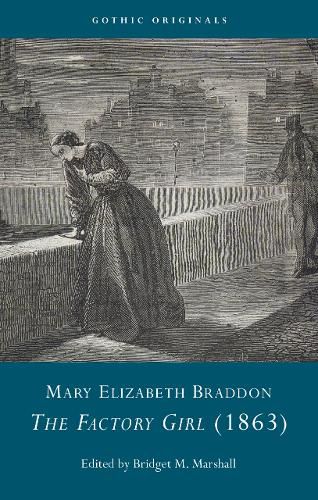Readings Newsletter
Become a Readings Member to make your shopping experience even easier.
Sign in or sign up for free!
You’re not far away from qualifying for FREE standard shipping within Australia
You’ve qualified for FREE standard shipping within Australia
The cart is loading…






Mary Elizabeth Braddon's The Factory Girl (1863) was a cheap serial intended for working-class readers.
The sprawling plot centres on Laura Leslie and her daughter, Dora, who are the targets of a diverse cast of villains. After Laura's tragic death, Dora and her adoptive mother start a new life working in a cotton mill, but Dora's beauty attracts unwelcome attention, putting them in danger. Dora is the classic factory girl, a nineteenth-century revision of the Gothic heroine.
Republished in the US in both newspapers and as a book, and translated into French, the novel has been out of print since the 1860s. This edition reproduces the original Halfpenny Journal text and illustrations, and adds a scholarly introduction placing the novel in numerous cultural contexts, including the rise of sensation fiction; nineteenth-century popular theatre; the transformation of the genre of the Gothic; and the backdrop of the Industrial Revolution.
$9.00 standard shipping within Australia
FREE standard shipping within Australia for orders over $100.00
Express & International shipping calculated at checkout
Mary Elizabeth Braddon's The Factory Girl (1863) was a cheap serial intended for working-class readers.
The sprawling plot centres on Laura Leslie and her daughter, Dora, who are the targets of a diverse cast of villains. After Laura's tragic death, Dora and her adoptive mother start a new life working in a cotton mill, but Dora's beauty attracts unwelcome attention, putting them in danger. Dora is the classic factory girl, a nineteenth-century revision of the Gothic heroine.
Republished in the US in both newspapers and as a book, and translated into French, the novel has been out of print since the 1860s. This edition reproduces the original Halfpenny Journal text and illustrations, and adds a scholarly introduction placing the novel in numerous cultural contexts, including the rise of sensation fiction; nineteenth-century popular theatre; the transformation of the genre of the Gothic; and the backdrop of the Industrial Revolution.